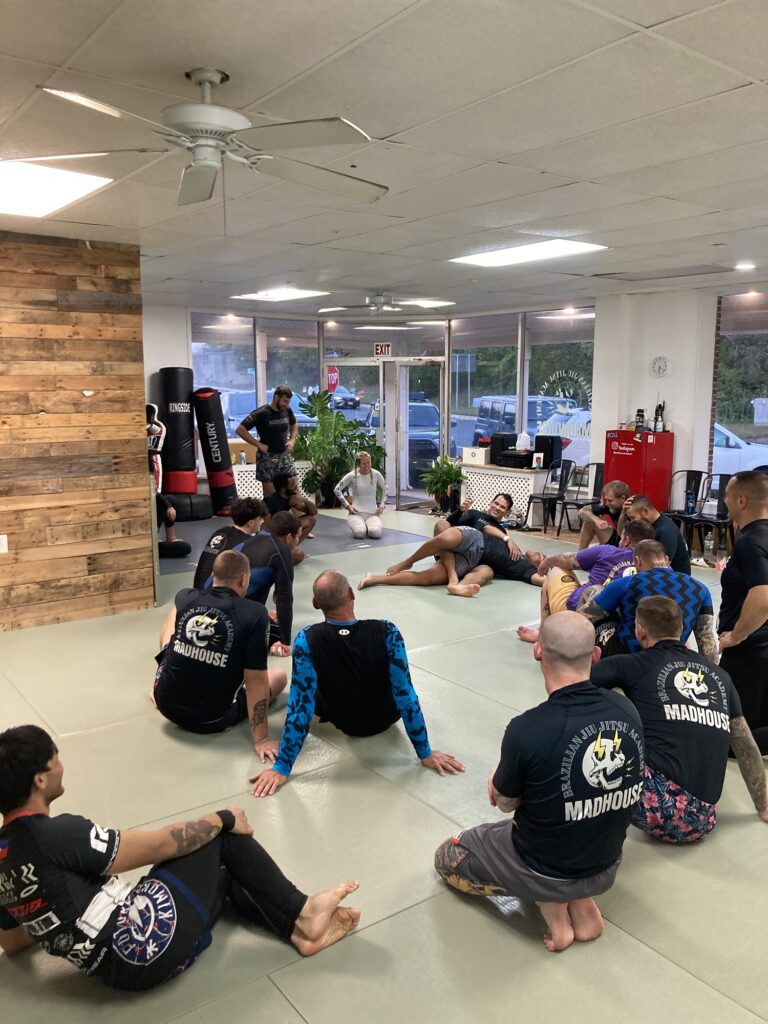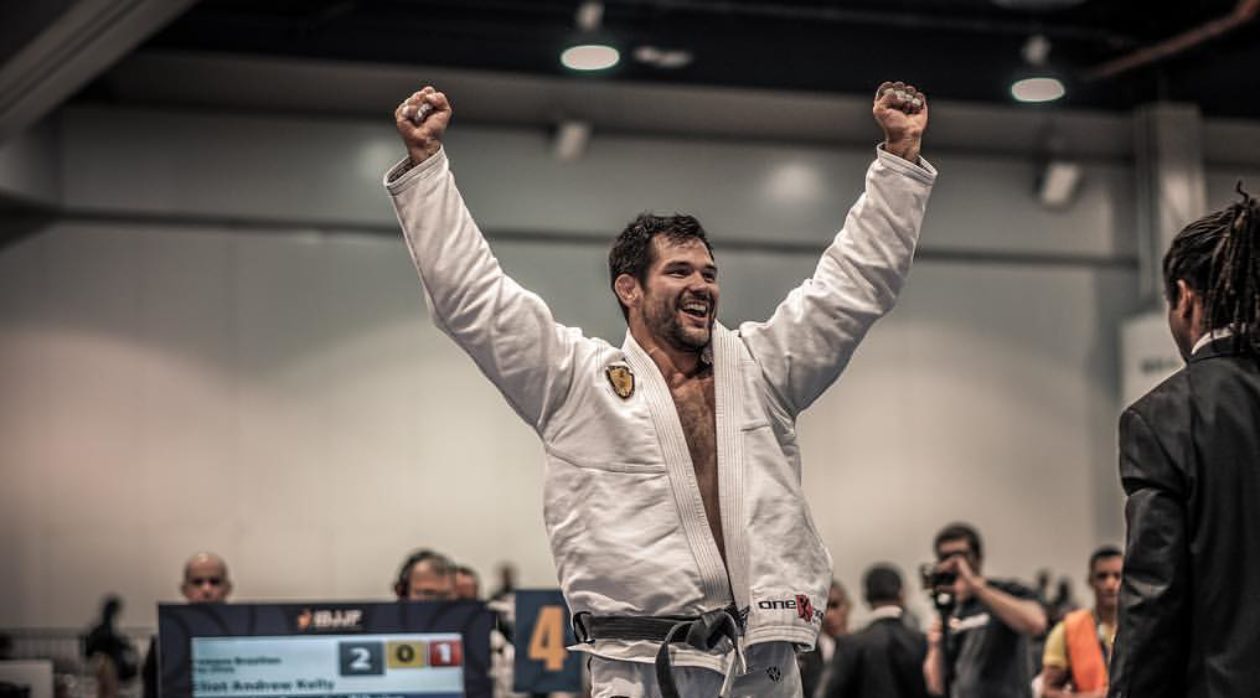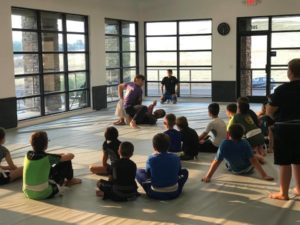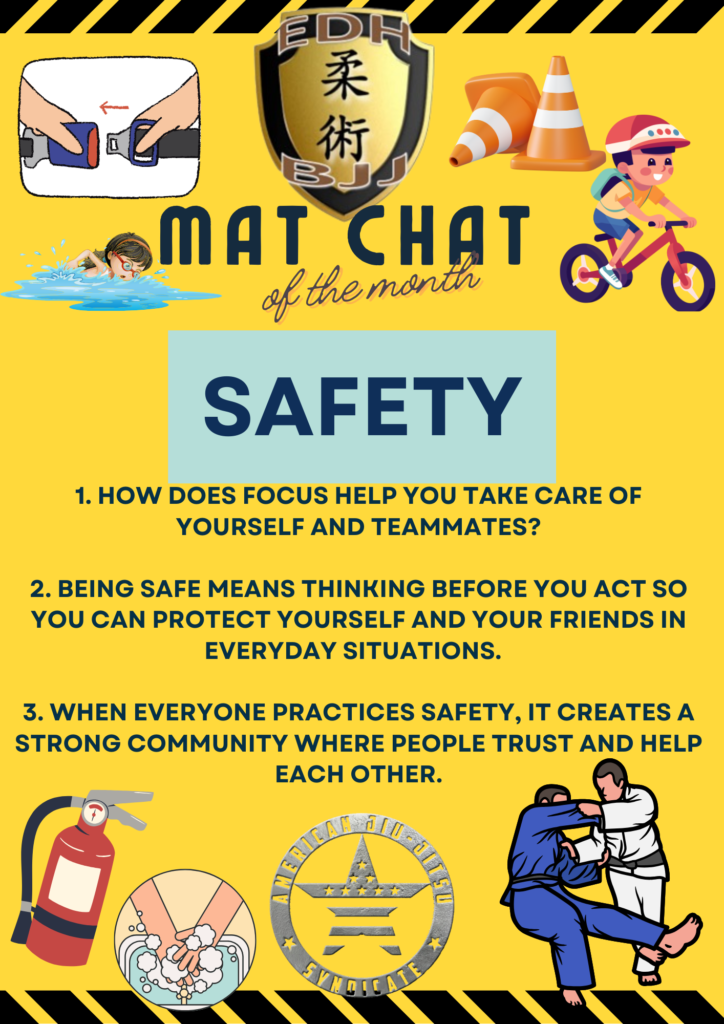
At El Dorado Hills Jiu Jitsu, our monthly mat chats are an opportunity to teach valuable life skills that go beyond the techniques and physical training on the mat. This September, our focus is on safety, a key principle both in and out of the gym.
Why Safety Matters in Jiu Jitsu
Safety is the foundation of successful training. When practicing Brazilian Jiu Jitsu (BJJ), we trust our training partners and instructors to create an environment where we can push ourselves without unnecessary risk. This principle applies to every roll, every drill, and every technique. Proper safety habits ensure that we can continue to grow and train, free from injury.
Key Concepts of Safety in BJJ
- Respect for Your Partner
A core part of safety is having respect for your training partner. We encourage our students, from Peewee to Juniors, to communicate with their partners—whether it’s tapping out when necessary or discussing how to practice a new technique. By understanding each other’s limits, we create an environment of mutual trust. - Controlled Movements
Learning to control your movements is essential to preventing injuries. This month, we’ll discuss the importance of practicing with precision rather than relying on force. Whether you’re going for a takedown or an armbar, control ensures that you’re not accidentally putting your partner in danger. - Awareness and Listening
Awareness is a critical aspect of safety. In September’s mat chat, we’ll talk about listening to your body, understanding when to ease off during a drill, and being mindful of your surroundings. We also remind our students to listen to their coaches, whose experience helps guide them in safely navigating their training.
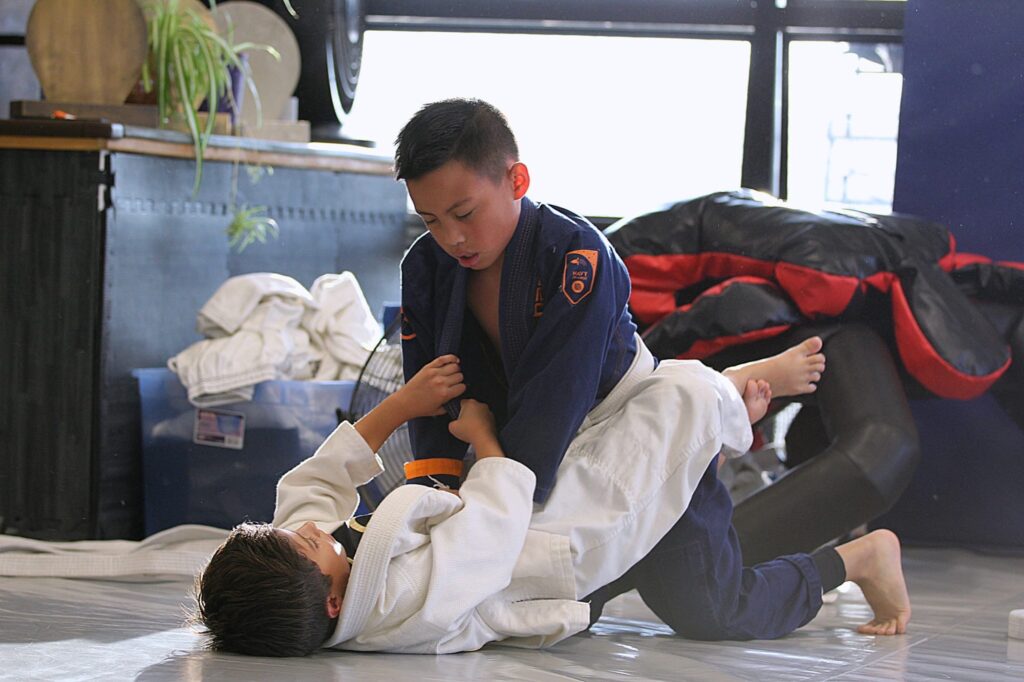
Safety Beyond the Mat
The lessons we learn about safety in Jiu Jitsu apply to our daily lives as well. Whether it’s crossing the street, riding a bike, or playing a sport, staying safe requires awareness, communication, and control. We want our students to take these lessons and apply them at home, at school, and in their communities. Our goal is to instill a sense of responsibility for both personal safety and the well-being of those around them.
As we discuss this important life skill in our youth classes throughout September, we encourage parents to engage in conversations with their children about how they can stay safe in different aspects of life. Through the practice of BJJ and these vital life skills, we are developing strong, aware, and responsible individuals.
Let’s have a safe and productive month on and off the mat!
